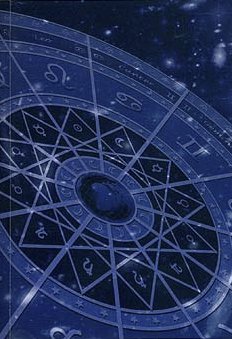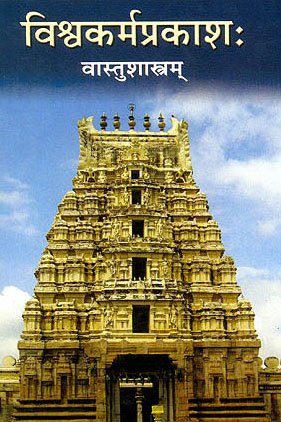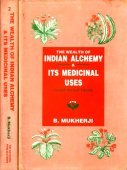Saukhya: 17 definitions
Introduction:
Saukhya means something in Hinduism, Sanskrit, Jainism, Prakrit, Marathi. If you want to know the exact meaning, history, etymology or English translation of this term then check out the descriptions on this page. Add your comment or reference to a book if you want to contribute to this summary article.
In Hinduism
Jyotisha (astronomy and astrology)
Source: Wisdom Library: Brihat Samhita by VarahamihiraSaukhya (सौख्य) refers to “happiness”, according to the Bṛhatsaṃhitā (chapter 11), an encyclopedic Sanskrit work written by Varāhamihira mainly focusing on the science of ancient Indian astronomy astronomy (Jyotiṣa).—Accordingly, “Generally, if the luminous body or comet be small, clear, glossy, straight, transient, white and visible either immediately after their appearance or some time afterwards, there will be health and happiness in the land [i.e., subhikṣa-saukhya-avaha]. If it be the opposite of these, or of the shape of the rainbow or with two or three tails, mankind will not be happy”.

Jyotisha (ज्योतिष, jyotiṣa or jyotish) refers to ‘astronomy’ or “Vedic astrology” and represents the fifth of the six Vedangas (additional sciences to be studied along with the Vedas). Jyotisha concerns itself with the study and prediction of the movements of celestial bodies, in order to calculate the auspicious time for rituals and ceremonies.
Shaivism (Shaiva philosophy)
Source: Brill: Śaivism and the Tantric TraditionsSaukhya (सौख्य) refers to “unequalled happiness” (which is obtained when karma is destroyed, after attaining indifference), according to the Vārāṇasīmāhātmya verse 1.99ff.—Pulastya also reports that there is a pond there called Kālodaka, which arose when Kālarudra was playing on the cremation ground. At that time the Lord taught the observance of the skull (kapālavrata). He chopped off the fifth head of Brahmā, as a consequence of which there arose the holy Pāśupata pond. Mahādeva subsequently carries Brahmā’s skull around the world and unites with the cremation grounds. There he teaches that transmigration results from attachment (sneha), that attachment comes from desire (rāga), and that attachment is destroyed by indifference (vairāgya). When people attain indifference, their karma is destroyed and they attain unequalled happiness (saukhya). [...]

Shaiva (शैव, śaiva) or Shaivism (śaivism) represents a tradition of Hinduism worshiping Shiva as the supreme being. Closely related to Shaktism, Shaiva literature includes a range of scriptures, including Tantras, while the root of this tradition may be traced back to the ancient Vedas.
Vastushastra (architecture)
Source: Brill: Śaivism and the Tantric Traditions (architecture)Saukhya (सौख्य) refers to “pleasures”, according to the Devyāmata (chapter 105).—Accordingly, [while describing the consequences of a doorway]—“[...] The fourth one, named Māhendra, fulfills every desire for the householder. The fourth one in the house facing south, Gṛhakṣata, increases food, drink and sons for householders. The sixth one, called Gandhārva, brings glory, pleasures (saukhya) and contentment. [...]

Vastushastra (वास्तुशास्त्र, vāstuśāstra) refers to the ancient Indian science (shastra) of architecture (vastu), dealing with topics such architecture, sculpture, town-building, fort building and various other constructions. Vastu also deals with the philosophy of the architectural relation with the cosmic universe.
Yoga (school of philosophy)
Source: ORA: Amanaska (king of all yogas): A Critical Edition and Annotated Translation by Jason BirchSaukhya (सौख्य) refers to “happiness (the highest state)”, according to the Yogabīja 150cd-151.—Accordingly: “Then, O goddess, when the union [of the individual self with the supreme self] has been accomplished, the mind dissolves. The breath becomes steady upon the arising of union in absorption (i.e., Layayoga). Because of the absorption, [transcendental] happiness (saukhya), the highest state, whose bliss is of one’s own self, is obtained”.

Yoga is originally considered a branch of Hindu philosophy (astika), but both ancient and modern Yoga combine the physical, mental and spiritual. Yoga teaches various physical techniques also known as āsanas (postures), used for various purposes (eg., meditation, contemplation, relaxation).
Purana and Itihasa (epic history)
Source: archive.org: Shiva Purana - English TranslationSaukhya (सौख्य) refers to the “pleasures of (the heaven)”, according to the Śivapurāṇa 2.3.54 (“Description of the duties of the chaste wife”).—Accordingly, as a Brahmin lady said to Pārvatī: “[...] The three families—that of the father, that of the mother and that of the husband—enjoy the pleasures (saukhya) of heaven [svarge saukhyāni bhuṃjate] due to the merit of the chaste woman. Disloyal women cause the downfall of the three families, that of the father, mother and husband and become distressed here and hereafter. [...]”.

The Purana (पुराण, purāṇas) refers to Sanskrit literature preserving ancient India’s vast cultural history, including historical legends, religious ceremonies, various arts and sciences. The eighteen mahapuranas total over 400,000 shlokas (metrical couplets) and date to at least several centuries BCE.
In Jainism
General definition (in Jainism)
Source: The University of Sydney: A study of the Twelve ReflectionsSaukhya (सौख्य) refers to “happiness”, according to the 11th century Jñānārṇava, a treatise on Jain Yoga in roughly 2200 Sanskrit verses composed by Śubhacandra.—Accordingly, “Also, the fool who seeks happiness (saukhya) in sense objects, enters a fire in order to be cool [and] he would drink poison in order to live”.

Jainism is an Indian religion of Dharma whose doctrine revolves around harmlessness (ahimsa) towards every living being. The two major branches (Digambara and Svetambara) of Jainism stimulate self-control (or, shramana, ‘self-reliance’) and spiritual development through a path of peace for the soul to progess to the ultimate goal.
Languages of India and abroad
Marathi-English dictionary
Source: DDSA: The Molesworth Marathi and English Dictionarysaukhya (सौख्य).—n S (sukha) Felicity, happiness; pleased or happy state: also ease, pleasure, delight &c. abstractly.
Source: DDSA: The Aryabhusan school dictionary, Marathi-Englishsaukhya (सौख्य).—n Felicity, happiness; ease ab- stractly.
Marathi is an Indo-European language having over 70 million native speakers people in (predominantly) Maharashtra India. Marathi, like many other Indo-Aryan languages, evolved from early forms of Prakrit, which itself is a subset of Sanskrit, one of the most ancient languages of the world.
Sanskrit dictionary
Source: DDSA: The practical Sanskrit-English dictionarySaukhya (सौख्य).—Pleasure, happiness, satisfaction, felicity, enjoyment.
Derivable forms: saukhyam (सौख्यम्).
Source: Cologne Digital Sanskrit Dictionaries: Shabda-Sagara Sanskrit-English DictionarySaukhya (सौख्य).—n.
(-khyaṃ) Pleasure, happiness, felicity. E. sukha happiness, ṣyañ aff.
Source: Cologne Digital Sanskrit Dictionaries: Benfey Sanskrit-English DictionarySaukhya (सौख्य).—i. e. sukha + ya, n. Pleasure, [Pañcatantra] 3, 15; happiness, [Pañcatantra] ii. [distich] 17.
Source: Cologne Digital Sanskrit Dictionaries: Cappeller Sanskrit-English DictionarySaukhya (सौख्य).—[neuter] welfare, comfort, joy, bliss.
Source: Cologne Digital Sanskrit Dictionaries: Monier-Williams Sanskrit-English DictionarySaukhya (सौख्य):—[from saukha] n. (ifc. f(ā). ) welfare, comfort, health, happiness, felicity, enjoyment, [Manu-smṛti; Mahābhārata etc.]
Source: Cologne Digital Sanskrit Dictionaries: Yates Sanskrit-English DictionarySaukhya (सौख्य):—(khyaṃ) 1. n. Pleasure, happiness.
Source: DDSA: Paia-sadda-mahannavo; a comprehensive Prakrit Hindi dictionary (S)Saukhya (सौख्य) in the Sanskrit language is related to the Prakrit word: Sukkha.
[Sanskrit to German]
Sanskrit, also spelled संस्कृतम् (saṃskṛtam), is an ancient language of India commonly seen as the grandmother of the Indo-European language family (even English!). Closely allied with Prakrit and Pali, Sanskrit is more exhaustive in both grammar and terms and has the most extensive collection of literature in the world, greatly surpassing its sister-languages Greek and Latin.
Kannada-English dictionary
Source: Alar: Kannada-English corpusSaukhya (ಸೌಖ್ಯ):—
1) [noun] freedom from disagreement or quarrels; harmony; concord; peace.
2) [noun] happiness; pleasure.
Kannada is a Dravidian language (as opposed to the Indo-European language family) mainly spoken in the southwestern region of India.
See also (Relevant definitions)
Starts with: Saukhyada, Saukhyadayaka, Saukhyadayin, Saukhyakarma, Saukhyaprada, Saukhyashayanika, Saukhyashayika, Saukhyaspada.
Ends with (+16): Acyutasaukhya, Aihikasaukhya, Akshayasaukhya, Anamtasaukhya, Apasaukhya, Asaukhya, Atimdriyasaukhya, Avatarasaukhya, Ayurvedasaukhya, Danasaukhya, Dehasaukhya, Deshasaukhya, Ihaparasaukhya, Imdriyasaukhya, Jinasaukhya, Kalanirnayasaukhya, Mahasaukhya, Netrasaukhya, Parisaukhya, Patrasaukhya.
Full-text (+31): Saukhyashayika, Saukhyadayaka, Saukhyashayanika, Saukhyada, Ayurveda, Saukhyadayin, Cavukkiyam, Shishusaukhya, Shraddhasaukhya, Shamasaukhya, Acaukkiyam, Mahasaukhya, Saukyam, Vastusaukhya, Shuddhasaukhya, Visaukhya, Saukhyaspada, Deshasaukhya, Sukkha, Dukhya.
Relevant text
Search found 24 books and stories containing Saukhya; (plurals include: Saukhyas). You can also click to the full overview containing English textual excerpts. Below are direct links for the most relevant articles:
Garga Samhita (English) (by Danavir Goswami)
Verse 1.14.57 < [Chapter 14 - The Liberation of Śakaṭāsura and Tṛṇāvarta]
Verse 4.9.7 < [Chapter 9 - The Glories of Srī Ekādaśī]
Verse 1.12.29 < [Chapter 12 - Description of Śrī Nanda’s Festival]
Hari-bhakti-kalpa-latikā (by Sarasvati Thkura)
Bhajana-Rahasya (by Srila Bhaktivinoda Thakura Mahasaya)
Text 12 < [Chapter 5 - Pañcama-yāma-sādhana (Aparāhna-kālīya-bhajana–kṛṣṇa-āsakti)]
Text 15 < [Chapter 5 - Pañcama-yāma-sādhana (Aparāhna-kālīya-bhajana–kṛṣṇa-āsakti)]
Sahitya-kaumudi by Baladeva Vidyabhushana (by Gaurapada Dāsa)
Text 9.39 [wheel formation] < [Chapter 9 - Ornaments of Sound]
Text 10.220 < [Chapter 10 - Ornaments of Meaning]
Text 10.190 < [Chapter 10 - Ornaments of Meaning]
Brihad Bhagavatamrita (commentary) (by Śrī Śrīmad Bhaktivedānta Nārāyana Gosvāmī Mahārāja)
Verse 2.4.192 < [Chapter 4 - Vaikuṇṭha (the spiritual world)]
Bhakti-rasamrta-sindhu (by Śrīla Rūpa Gosvāmī)
Verse 3.2.82 < [Part 2 - Affection and Service (dāsya-rasa)]
Verse 2.1.188 < [Part 1 - Ecstatic Excitants (vibhāva)]
Verse 3.1.5 < [Part 1 - Neutral Love of God (śānta-rasa)]
Related products
